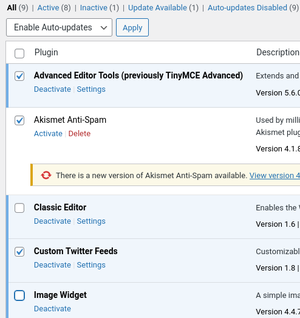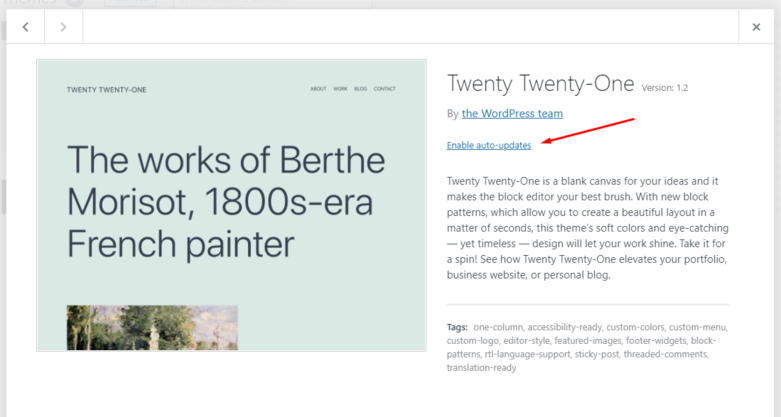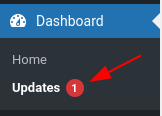Updating WordPress: Difference between revisions
mNo edit summary |
|||
| Line 4: | Line 4: | ||
== Automatic updates == | == Automatic updates == | ||
The idea is to log into WordPress' admin dashboard to undergo the following steps. This | The idea is to log into WordPress' admin dashboard to undergo the following steps. If you can't find an admin or login link on your website itself (often in the footer), you can simply add /wpadmin behind the main URL of your website. This is also where you create and edit your pages. | ||
=== Automatic updates for WordPress === | === Automatic updates for WordPress === | ||
Revision as of 12:00, 22 April 2021
Maintaining the software of your website is crucial to ensure everything remains operational and secure. Making sure to perform updates on a regular basis is an important part of that. Beyond fixing security bugs, updates of WordPress as well as its plugins and themes, may introduce new useful features and ensures that no problems arise when we upgrade our servers every two years.
While consistently applying updates has many benefits, the most important aspect for you as an account holder and ULYSSIS as the server maintainer is of course that the information on your website is safe and that your visitors can safely visit your website. We therefore advise that all users enable full updating automation within WordPress. This way, you no longer need to perform updates yourself, but the entire process will be automated. The instructions within this manual primarily go into how to fully automate the process, but you can also find instructions on manual updates. Do keep in mind that security issues, especially in popular plugins or WordPress itself, are often exploited by cybercriminals within a few days after the release of a fix.
Automatic updates
The idea is to log into WordPress' admin dashboard to undergo the following steps. If you can't find an admin or login link on your website itself (often in the footer), you can simply add /wpadmin behind the main URL of your website. This is also where you create and edit your pages.
Automatic updates for WordPress
- Go to Dashboard at the upper left of the screen and go to updates.
- Toggle 'Enable automatic updates for all new versions of WordPress'.
Automatic updates for plugins
- Navigate to Plugins in the left sidebar and select Installed plugins.
- In the dropdown menu select Enable Auto-updates.
- Check the boxes next to the plugins you want to update automatically.
- Press Apply next to the previously mentioned dropdown menu.
Automatic updates for themes
- Navigate to Appearance in the left sidebar and select Themes.
- Click on the theme thumbnail and select 'Enable auto-updates'. This must be done for each theme separately.
Manually updating WordPress, plugins and themes
We still do not recommend updating manually as it is mote time consuming and a bigger security risk. The following steps are only for updating plugins, but you can perform manual updates for themes and for WordPress itself in a similar way on the respective sections of the updates page.
- Pending updates will be displayed as a notification in the left bar of the interface.
- Go to Dashboard at the upper left of the screen and go to updates.
- All updates will be visible on this page. First check the boxes next to the plugins you want to update.
- Now click the Update Plugins button.



